Related Research Articles

Caliban is the second-largest retrograde irregular satellite of Uranus. It was discovered on 6 September 1997 by Brett J. Gladman, Philip D. Nicholson, Joseph A. Burns, and John J. Kavelaars using the 200-inch Hale telescope together with Sycorax and given the temporary designation S/1997 U 1.

The American Astronomical Society is an American society of professional astronomers and other interested individuals, headquartered in Washington, DC. The primary objective of the AAS is to promote the advancement of astronomy and closely related branches of science, while the secondary purpose includes enhancing astronomy education and providing a political voice for its members through lobbying and grassroots activities. Its current mission is to enhance and share humanity's scientific understanding of the universe as a diverse and inclusive astronomical community.

Themisto, also known as Jupiter XVIII, is a small prograde irregular satellite of Jupiter. It was discovered in 1975, subsequently lost, and rediscovered in 2000.

Setebos is one of the outermost retrograde irregular satellites of Uranus. It was discovered on 18 July 1999 by John J. Kavelaars et al. and provisionally designated S/1999 U 1.

Sycorax is the largest irregular satellite of Uranus. Sycorax was discovered on 6 September 1997 by Brett J. Gladman, Philip D. Nicholson, Joseph A. Burns, and John J. Kavelaars using the 200-inch Hale telescope, together with Caliban, and given the temporary designation S/1997 U 2.

Kiviuq is a prograde irregular satellite of Saturn. It was discovered by J. J. Kavelaars in 2000, and given the temporary designation S/2000 S 5. It was named after Kiviuq, a hero of Inuit mythology.

Ijiraq, or Saturn XXII (22), is a small prograde irregular satellite of Saturn. It was discovered by the team of Brett Gladman, John J. Kavelaars, et al. in 2000, and given the temporary designation S/2000 S 6. It was named in 2003 after the ijiraq, a creature in Inuit mythology.
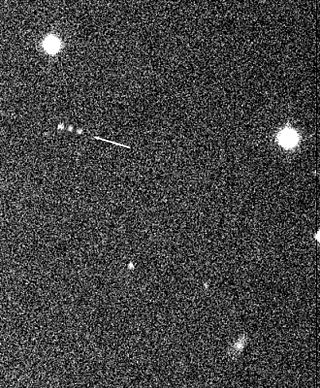
Paaliaq is a prograde irregular satellite of Saturn. It was discovered by J. J. Kavelaars, Brett J. Gladman, Jean-Marc Petit, Hans Scholl, Matthew J. Holman, Brian G. Marsden, Philip D. Nicholson and Joseph A. Burns in early October 2000, and given the temporary designation S/2000 S 2. It was named in August 2003 after a fictional shaman in the book The Curse of the Shaman, written by Michael Kusugak, who supplied Kavelaars with the names of giants from Inuit mythology that were used for other Saturnian moons.
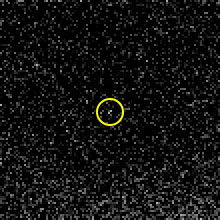
Albiorix is a prograde irregular satellite of Saturn. It was discovered by Holman and colleagues in 2000, and given the temporary designation S/2000 S 11.
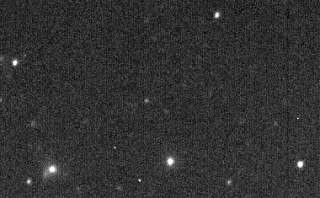
Erriapus, or Saturn XXVIII (28), is a prograde irregular satellite of Saturn. It was discovered by Brett Gladman, John J. Kavelaars and colleagues in 2000, and given the temporary designation S/2000 S 10. It was named Erriapo in August 2003 after Erriapus, a giant in Gaulish mythology; the name was changed from dative Erriapo to nominative Erriapus per IAU conventions in late 2007.
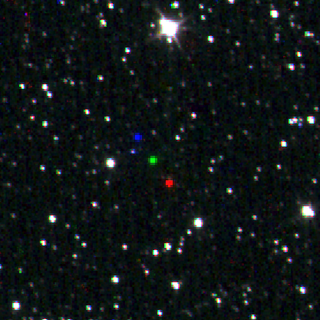
Siarnaq, also designated Saturn XXIX, is the second-largest irregular moon of Saturn. It was discovered on 23 September 2000 by a team of astronomers led by Brett J. Gladman. It was named after the Inuit goddess of the sea, Siarnaq, who is more commonly known as Sedna. Siarnaq is the largest member of Saturn's Inuit group of prograde irregular moons, which orbit far from Saturn in the same direction as the planet's rotation. The moons of the Inuit group are believed to have originated as fragments from the collisional breakup of a larger progenitor moon after it was gravitationally captured into orbit around Saturn several billion years ago. Several other small Inuit group moons share similar orbits to Siarnaq, indicating that the moon had experienced another collision after forming from its progenitor.
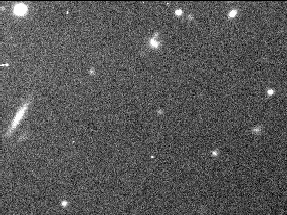
Tarvos, or Saturn XXI, is a prograde irregular satellite of Saturn. It was discovered by John J. Kavelaars et al. on September 23, 2000, and given the temporary designation S/2000 S 4. The name, given in August 2003, is after Tarvos, a deity depicted as a bull god carrying three cranes alongside its back from Gaulish mythology.

The Gallic group is a dynamical grouping of the prograde irregular satellites of Saturn following similar orbits. Their semi-major axes range between 16 and 19 Gm, their inclinations between 35° and 40°, and their eccentricities around 0.53. The International Astronomical Union (IAU) reserves names taken from Gallic mythology for these moons.
Matthew J. Holman is a Smithsonian astrophysicist and lecturer at Harvard University. Holman studied at MIT, where he received his bachelor's degree in mathematics in 1989 and his PhD in planetary science in 1994. He was awarded the Newcomb Cleveland Prize in 1998.
The Harold Masursky Award for Meritorious Service to Planetary Science, usually called the Masursky Award, is awarded annually by the Division for Planetary Sciences (DPS) of the American Astronomical Society. The award for Meritorious Service to Planetary Science was established by the DPS to recognize and honor individuals who have rendered outstanding service to planetary science and exploration through engineering, managerial, programmatic, or public service activities. For purposes of this award, planetary science and exploration refers to the multidisciplinary study of the solar system and its members, excluding work dealing primarily with the Sun or the Earth. It was named in honor of Harold Masursky. The award has been given annually since 1991, except 2001, 2002, and 2009.

Eris is the most massive and second-largest known dwarf planet in the Solar System. It is a trans-Neptunian object (TNO) in the scattered disk and has a high-eccentricity orbit. Eris was discovered in January 2005 by a Palomar Observatory–based team led by Mike Brown and verified later that year. In September 2006, it was named after the Greco–Roman goddess of strife and discord. Eris is the ninth-most massive known object orbiting the Sun and the sixteenth-most massive overall in the Solar System. It is also the largest object that has not been visited by a spacecraft. Eris has been measured at 2,326 ± 12 kilometers (1,445 ± 7 mi) in diameter; its mass is 0.28% that of the Earth and 27% greater than that of Pluto, although Pluto is slightly larger by volume, both having a surface area that is comparable to the area of Russia or Antarctica.
The Division for Planetary Sciences (DPS) is a division within the American Astronomical Society (AAS) devoted to solar system research. It was founded in 1968. The first organizing committee members were: Edward Anders, Lewis Branscomb, Joseph W. Chamberlain, Richard M. Goody, John S. Hall, Arvidas Kliore, Michael B. McElroy, Tobias Owen, Gordon Pettengill, Carl Sagan, and Harlan James Smith. As of 2009, it is the largest special-interest division within the AAS. As of Oct 2010, membership totaled approximately 1415 planetary scientists and astronomers, including about 20% residing outside the U.S.
Philip D. Nicholson is an Australian-born professor of astronomy at Cornell University in the Astronomy department specialising in Planetary Sciences. He was editor-in-chief of the journal Icarus between 1998 and 2018.

Christina "Chrissy" Richey is an American planetary scientist and astrophysicist working at Jet Propulsion Laboratory in La Cañada Flintridge, California. Richey is a project staff scientist for the Europa Clipper mission and is a research technologist in the Astrophysics and Space Sciences Section. Prior to working at JPL, Richey worked as contractor for Arctic Slope Regional Corporation at NASA Headquarters in Washington, D.C. They were a program officer in NASA's Planetary Science Division, the deputy program scientist for the OSIRIS-REx mission, and the deputy science advisor for research and analysis for the Science Mission Directorate.
2011 JY31 is a binary trans-Neptunian object from the Kuiper belt, located in the outermost region of the Solar System. It was discovered on 4 May 2011, by a team of astronomers using one of the Magellan Telescopes in Chile during the New Horizons KBO Search for a potential flyby target for the New Horizons spacecraft. Distant observations by New Horizons from September 2018 revealed its binary nature, showing two 50 km (31 mi)-wide components in a tight, mutual orbit 200 km (120 mi) apart. The discovery adds support to streaming instability as the dominant mechanism in the formation of tight and contact binary planetesimals such as 486958 Arrokoth, which appear to be prevalent in the cold classical Kuiper belt population.
References
- ↑ Burns, Joseph (1966). The influence of a magnetic field on stellar accretion. Ithaca. Retrieved 2015-01-06.
- ↑ J.A. Burns, Icarus 130, 225 (1997)
- ↑ "Past Officers – DPS". Dps.aas.org. Retrieved 2011-11-06.
- ↑ "Past Officers – DDA". Dda.harvard.edu. Retrieved 2011-11-06.
- ↑ "Joseph A. Burns IAU Profile". Iau.org. 2011-05-18. Retrieved 2011-11-06.
- ↑ "Masursky Prize Winners". Dps.aas.org. Retrieved 2011-11-06.
- ↑ "The AAS/DDA Brouwer Award". dda.aas.org. Archived from the original on 2013-09-05. Retrieved 2013-08-14.
- ↑ Burns, J. A.; Lamy, P. L.; Soter, S. (1979). "Radiation forces on small particles in the solar system". Icarus. Adsabs.harvard.edu. 40 (1): 1–48. Bibcode:1979Icar...40....1B. doi:10.1016/0019-1035(79)90050-2.
- ↑ Gladman, B. J.; Nicholson, P. D.; Burns, J. A.; Kavelaars, J. J.; Marsden, B. G.; Williams, G. V.; Offutt, W. B. (1998). "Discovery of two distant irregular moons of Uranus". Nature. 392 (6679): 897–899. Bibcode:1998Natur.392..897G. doi:10.1038/31890. S2CID 4315601.
- ↑ "2708 Burns (1981 WT)". Minor Planet Center. Retrieved 28 March 2018.
- ↑ "MPC/MPO/MPS Archive". Minor Planet Center. Retrieved 28 March 2018.
- ↑ Showalter, M. R. (1985). "Jupiter's ring system resolved: Physical properties inferred from the Voyager im". Adsabs.harvard.edu: 2. Bibcode:1985PhDT.........2S.
{{cite journal}}: Cite journal requires|journal=(help) - ↑ "Hamilton's Thesis" (PDF). Retrieved 2011-11-06.
- ↑ "Hamilton's Homepage". Astro.umd.edu. 1995-10-27. Retrieved 2011-11-06.
- ↑ Gold, Lauren (2006-08-02). "Symposium honors Joe Burns at 65". News.cornell.edu. Retrieved 2011-11-06.
- ↑ Kolvoord's Homepage Archived May 16, 2008, at the Wayback Machine
- ↑ "Gladman's Thesis". Astro.ubc.ca. Retrieved 2011-11-06.
- ↑ "Gladman's Homepage". Astro.ubc.ca. Retrieved 2011-11-06.
- ↑ "Ishan's Thesis". August 2004. Retrieved 2017-09-15.
- ↑ "Ishan's Homepage" . Retrieved 2017-09-15.